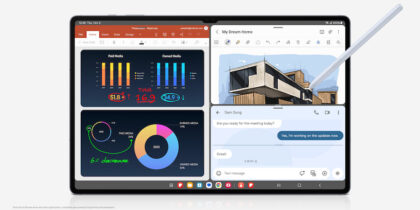Once you’ve decided to adopt paperless workflows by using electronic forms, the next step is to choose the best tools — the software and the hardware — needed to do so. As you vet data collection and management solutions for your business, consider the following key criteria and qualifying questions:
Choosing a Software Provider for Going Paperless
Shifting your business documents from paper to electronic is simple to understand but less simple to execute. Vendors provide both off-the-shelf and customized software and solutions for form digitization. Some vendors offer packaged forms to use as-is, while other vendors offer purpose-specific forms that can be customized (by them or by you).
Ask these questions to help you determine the best option for your business.
What do you want paperless workflows to do for your business?
Using electronic forms is less about reducing paper use and more about harnessing data collection and data management to further your business capabilities. After quickly capturing accurate data, electronic forms can migrate that data to the cloud, where it can interact with artificial intelligence (AI), machine learning and analytics. Those capabilities help predict customer, employee and business needs in real time or near real time, delivering a competitive advantage. Choose a vendor that understands your digital transformation journey and can help you succeed.
Do you have in-house tech teams that can help with the transition?
If your IT team includes programmers and system administrators, you may have enough talent to execute the transition internally. But if you don’t have a deep IT bench or your team doesn’t have the bandwidth for new projects, you may need a vendor who can manage the transition for you. Look for a vendor who can provide the level of service you need.
What's the Best Tablet for Your Business?
Take this quick assessment to see which Samsung tablet would best support your business needs. Download Now
Will off-the-shelf options meet your needs?
Some providers offer libraries from which you can extract premade forms. These ready-to-go options deliver exactly what many businesses need to transition to electronic forms. Some businesses, however, have more specialized needs. If your business is more specialized, choose a vendor that can create forms to serve your specific needs.
Do your electronic forms need to integrate with other business systems?
Will the data collection from your newly digitized forms need to flow to an enterprise resource planning (ERP), customer relationship management (CRM), accounting or payroll system? If so, you’ll need to choose a software provider that will help you execute those integrations or has application programming interfaces (APIs) that simplify the integration process for your internal teams.
Choosing the Right Hardware
Hardware for form digitization must complement your chosen software solution and suit user needs. Will forms be completed by employees only, or by employees and customers? Will employees enter data outdoors? Understanding the hardware types available will help you make your selection.
What type of device and screen size work best for users?
Many businesses choose electronic forms because they want to work without barriers. Pairing digitized documents with mobile devices gives your employees freedom to do business from anywhere. Phones, tablets and wearables help employees stay mobile enough to serve customers in a retail store, work in the field on a service call or complete a transaction in a client’s office.
Who will use the devices?
At a doctor’s office, you may want patients to fill out their intake forms on a tablet. The tablet would need to be simple and intuitive and perhaps accommodate vision impairment. A small- to medium-sized business (SMB) may want its sales associates to use smartphones to complete transactions directly from the sales floor, removing the need for checkout lines, which take up precious space and require heavy equipment. Those devices may need to be small enough to fit into a pocket when they’re not in use. A utility company may provide field employees — who work outdoors in all types of weather — with rugged tablets to log their location, hours and job notes.
Where will the devices be used?
Retail employees who work on a sales floor have different needs than construction managers who travel site to site. Choose hardware appropriate for the work environment and expected hours of daily use. You may consider devices’ battery life, weatherproofing and the ability to use a device while wearing work gloves. For example, rugged mobile devices, like the Samsung Galaxy Tab Active Pro or XCover Pro smartphone, work in harsh and even wet conditions, indoors or out.
How will the device be secured?
Business devices often hold proprietary and confidential information. Look for hardware that offers mobile device management (MDM) options that allow you to custom-configure devices for your purposes and restrict the loading of unauthorized applications. Find a hardware provider and device management solution that also enable you to remotely lock and wipe a device that may be lost or stolen.
Learn more about modernizing your business through smart form digitization. And read on about the many benefits of going paperless.









